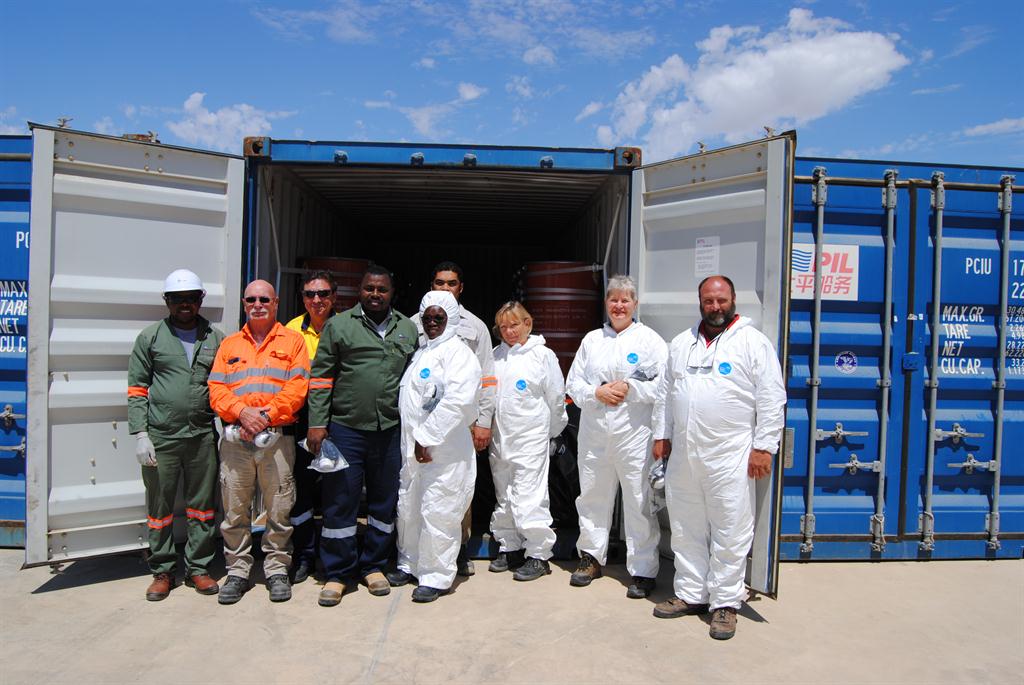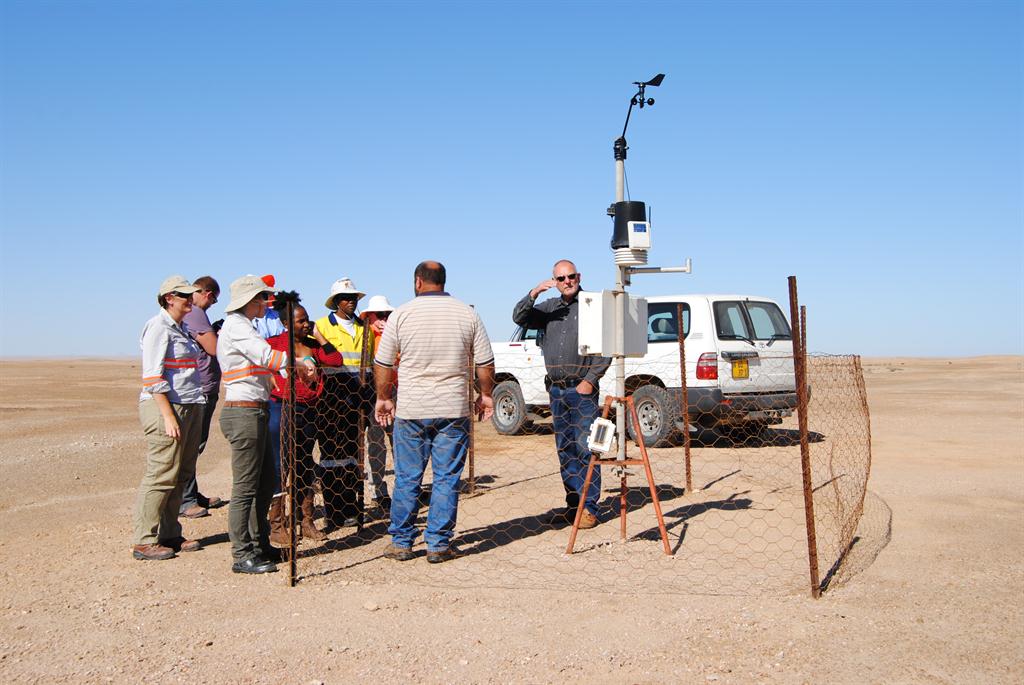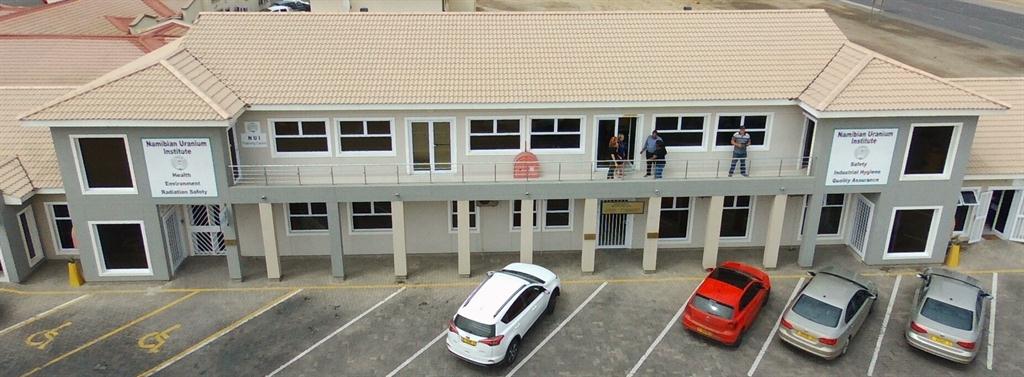Namibia knows uranium
Uranium Association leads entire industry
The Namibian Uranium Association (NUA) represents a uniquely Namibian way of ensuring sustainable development, environmental best practice, and the promotion of the Namibian uranium brand.
Members include all Namibian uranium-mining operations, all of Namibia’s leading uranium exploration companies, and associated contractors from the fields of contract mining, medical services, drilling, transport, personal protective equipment (PPE) supply and waste management.
“NUA members not only exercise global leading practice, they are actually at the forefront of setting the standards in international best practice in uranium mining and exploration, and NUA serves as a model for other uranium producing countries,” says Dr Gabi Schneider, NUA executive director.
“Indeed, it can be said that the world has taken note of the sound and responsible manner in which uranium is produced and explored for in Namibia, as NUA is invited on a regular basis to attend international conferences to make presentations on the role and operation of NUA,” she says.
Namibian uranium-mining companies subscribe to the International Council on Mining and Metals’ interpretation of sustainable development for the mining and metals sector, namely that investments should be technically appropriate, environmentally sound, financially profitable and socially responsible.
Best practice standards of operation that maintain international standing and reputation are applied as it is critical for any mining company to gain and maintain its ‘social licence to operate’ in the community.
“It is essential to integrate environmental, economic and social aspects through all phases of mineral production from exploration through construction, operation and mine site closure,” Schneider says.
NUA interacts with a number of national and international stakeholders. On the national front these are the Ministry of Mines & Energy (directorates of Mines and of Energy, Geological Survey of Namibia), the Ministry of Health & Social Services (National Radiation Protection Authority, Atomic Energy Board), the Ministry of Environment, Forestry & Tourism (Sustainable Development Advisory Board, Environmental Commissioner, Directorate of Parks and Wildlife Management, local park wardens), the Ministry of International Relations and Cooperation, the Office of the President, the National Planning Commission, the Erongo Regional Council and governor, the Erongo Development Foundation of which NUA is a member, the majors of Swakopmund, Walvis Bay and Arandis, the Chamber of Mines (Exploration and Environmental Committees, Council), the Chamber of Environment (Environmental Best Practice Guides), and the Namibian University of Science and Technology.
Internationally, NUA’s stakeholders are the International Atomic Energy Agency (IAEA), the World Nuclear Association (WNA), where NUA is a member of the Fuel Report, Radiological Protection, Waste and Decommissioning, and Transport Working Groups, the World Nuclear Transport Institute, and the Nuclear Suppliers Group (NSG).
Leading the way
Technologically Namibian uranium mining is also on the cutting edge.
“During more than half of a century of uranium exploration and mining, a number of innovative technologies were developed,” says Schneider.
“Rössing Uranium has developed a system whereby water from the tailings storage facility is recycled and reused on a continuous basis in the processing plant, minimising evaporation and infiltration into the tailings pile. This way, 62% of the process water is sourced through recycling, thereby reducing the consumption of fresh water substantially. In 2019 alone, 10% less fresh water was used compared to 2018.
“While Swakop Uranium’s Husab recovery plant employs conventional technology, it is with a capacity to produce 6 000 tonnes of uranium oxide per year, one of the largest uranium recovery plants in the world,” she says.
“At Langer Heinrich Mine, process innovation allowed the introduction of a bicarbonate recovery plant in 2015, which resulted in significant reagent cost reductions. The Erongo desalination plant has to be mentioned in connection with the Trekkopje Mine, without which it would not have been built. It is a first for Namibia, and now serves the wider general public and mining community in the Erongo Region.
“Bannerman Resources has optimised its recovery process by introducing a new nano-filtration technology, while Reptile Uranium is employing portable XRF technology and down-hole radiometric probing for their exploration work. Marenica undertook research to develop a uranium concentration process that is unique, ground-breaking and capable of concentrating uranium by a factor of up to 50 times, thereby reducing the feed to a leaching circuit dramatically. The process has been patented,” she says.
Uranium is different
“Uranium is quite different from other commodities. It requires special environmental management because of radiation safety, and it is subject to complex permit requirements nationally, as well as a substantial number of international treaties. NUA addresses this special situation, and supports policies that promote uranium as an energy source appropriate for our modern society and the need for a low carbon footprint,” says Schneider.
“The environment in which we operate is characterised by aridity, vast desert landscapes, scenic beauty, high biodiversity, endemism, and heritage resources.
“Mining and exploration activities take place in national parks, and the desert environment is fragile and highly sensitive to disturbances. Because of the concentration in one area in Namibia, uranium exploration and mining have cumulative environmental, economic and social impacts, which cannot be addressed on a project-by-project basis in isolation.
“An integrated approach is required to ensure co-existence of industrial activities and conservation, as well as tourism, and the need for such an integrated approach led to the formation of the NUA.”
Applied science
The Namibian Uranium Institute (NUI) is the executive arm of the NUA, with roots in the former Chamber of Mines Uranium Institute. It was put in place subsequent to the formation of the NUA to facilitate the interaction of all players involved in a coordinated way, she says, and to address the management of environmental issues, radiation, health, safety, stakeholder interaction and training.
The NUA and the NUI have a number of committees and working groups. The NUA’s Scientific Committee’s members are distinguished scientific professionals active in Namibia, and are appointed by the executive director of the NUI in consultation with the board of directors of the NUA. These scientists guide the NUI on scientific and training matters, including, but not limited to, the fields of radiation protection, the environment and its sustainable management, occupational health and safety, and raising awareness on these topics.
NUI is the only national radiation protection authority (NRPA) accepted institution providing radiation safety officers training. Lectures are presented by PhD-level experts in the fields of health, environment and radiation safety and security. The NUI is officially registered with the Ministry of Labour and Social Welfare as an authorized inspection authority (AIA) for competencies in health, environment and radiation safety and security. NUI accreditation with the Namibian University of Science and Technology is in the process.
The NUA Charter, to which all members subscribe, manifests the commitment to sustainable development and uranium stewardship, and further binds members to avoiding anti-trust behaviour, supporting fit-for-purpose regulatory arrangements, and transparent reporting.
“An outstanding example for leading best practice is the Strategic Environmental Assessment (SEA) of the Namibian uranium province,” Schneider says.
In 2006, when prices of fuel for civil nuclear reactors were rising fast, resulting in a worldwide boom in uranium exploration and mining, the Namibian uranium industry recommended to the Namibian government to undertake a SEA of the Namibian uranium province, where exploration for uranium was also expanding rapidly. Subsequently, such an assessment was carried out by the Geological Survey of Namibia, Ministry of Mines and Energy, in close cooperation with NUA, and provided vision and generated a culture of cooperation between the uranium mining industry, government and the public.
“This SEA was the first of its kind worldwide,” according to Schneider. The Strategic Environmental Management Plan (SEMP) was developed as a result. It is an over-arching framework and roadmap addressing the cumulative impacts of existing and potential developments and the extent to which uranium mining is impacting the central Namib.
“NUI is actively contributing to the compilation of the Annual SEMP Reports,” according to the executive director.
Covid-19 hits hard
After an initial period of minimal operations and maintenance during Namibia’s first lockdown, the mining industry was allowed to return to full production. However, this is obviously subject to the various regulations that have been published by the government ever since. These regulations provide for measures that safeguard the workforce at the workplace and are strictly adhered to, which has resulted in many changes to the way the work is carried out, and in additional costs.
However, even before regulations were gazetted, the industry had compiled elaborate protocols themselves, which ensure that utmost attention is paid to avoid the risk of transmission at the workplace and during commuting. As an industry that is accustomed to putting strict measures of radiation protection in place, the uranium mines and explorers have the benefit of being used to strict health and safety procedures.
Another issue is the special status of Walvis Bay, Swakopmund and Arandis, where staff of the industry reside, and where special restrictions apply. This requires careful planning of shifts and schedules, and the short-term announcements by the government make this difficult. Last not least, Covid-19 associated delays with the transport and reception of services obviously have a negative impact. The industry is grateful that transport of its own product has so far not been affected negatively, but this situation requires careful monitoring.
Members include all Namibian uranium-mining operations, all of Namibia’s leading uranium exploration companies, and associated contractors from the fields of contract mining, medical services, drilling, transport, personal protective equipment (PPE) supply and waste management.
“NUA members not only exercise global leading practice, they are actually at the forefront of setting the standards in international best practice in uranium mining and exploration, and NUA serves as a model for other uranium producing countries,” says Dr Gabi Schneider, NUA executive director.
“Indeed, it can be said that the world has taken note of the sound and responsible manner in which uranium is produced and explored for in Namibia, as NUA is invited on a regular basis to attend international conferences to make presentations on the role and operation of NUA,” she says.
Namibian uranium-mining companies subscribe to the International Council on Mining and Metals’ interpretation of sustainable development for the mining and metals sector, namely that investments should be technically appropriate, environmentally sound, financially profitable and socially responsible.
Best practice standards of operation that maintain international standing and reputation are applied as it is critical for any mining company to gain and maintain its ‘social licence to operate’ in the community.
“It is essential to integrate environmental, economic and social aspects through all phases of mineral production from exploration through construction, operation and mine site closure,” Schneider says.
NUA interacts with a number of national and international stakeholders. On the national front these are the Ministry of Mines & Energy (directorates of Mines and of Energy, Geological Survey of Namibia), the Ministry of Health & Social Services (National Radiation Protection Authority, Atomic Energy Board), the Ministry of Environment, Forestry & Tourism (Sustainable Development Advisory Board, Environmental Commissioner, Directorate of Parks and Wildlife Management, local park wardens), the Ministry of International Relations and Cooperation, the Office of the President, the National Planning Commission, the Erongo Regional Council and governor, the Erongo Development Foundation of which NUA is a member, the majors of Swakopmund, Walvis Bay and Arandis, the Chamber of Mines (Exploration and Environmental Committees, Council), the Chamber of Environment (Environmental Best Practice Guides), and the Namibian University of Science and Technology.
Internationally, NUA’s stakeholders are the International Atomic Energy Agency (IAEA), the World Nuclear Association (WNA), where NUA is a member of the Fuel Report, Radiological Protection, Waste and Decommissioning, and Transport Working Groups, the World Nuclear Transport Institute, and the Nuclear Suppliers Group (NSG).
Leading the way
Technologically Namibian uranium mining is also on the cutting edge.
“During more than half of a century of uranium exploration and mining, a number of innovative technologies were developed,” says Schneider.
“Rössing Uranium has developed a system whereby water from the tailings storage facility is recycled and reused on a continuous basis in the processing plant, minimising evaporation and infiltration into the tailings pile. This way, 62% of the process water is sourced through recycling, thereby reducing the consumption of fresh water substantially. In 2019 alone, 10% less fresh water was used compared to 2018.
“While Swakop Uranium’s Husab recovery plant employs conventional technology, it is with a capacity to produce 6 000 tonnes of uranium oxide per year, one of the largest uranium recovery plants in the world,” she says.
“At Langer Heinrich Mine, process innovation allowed the introduction of a bicarbonate recovery plant in 2015, which resulted in significant reagent cost reductions. The Erongo desalination plant has to be mentioned in connection with the Trekkopje Mine, without which it would not have been built. It is a first for Namibia, and now serves the wider general public and mining community in the Erongo Region.
“Bannerman Resources has optimised its recovery process by introducing a new nano-filtration technology, while Reptile Uranium is employing portable XRF technology and down-hole radiometric probing for their exploration work. Marenica undertook research to develop a uranium concentration process that is unique, ground-breaking and capable of concentrating uranium by a factor of up to 50 times, thereby reducing the feed to a leaching circuit dramatically. The process has been patented,” she says.
Uranium is different
“Uranium is quite different from other commodities. It requires special environmental management because of radiation safety, and it is subject to complex permit requirements nationally, as well as a substantial number of international treaties. NUA addresses this special situation, and supports policies that promote uranium as an energy source appropriate for our modern society and the need for a low carbon footprint,” says Schneider.
“The environment in which we operate is characterised by aridity, vast desert landscapes, scenic beauty, high biodiversity, endemism, and heritage resources.
“Mining and exploration activities take place in national parks, and the desert environment is fragile and highly sensitive to disturbances. Because of the concentration in one area in Namibia, uranium exploration and mining have cumulative environmental, economic and social impacts, which cannot be addressed on a project-by-project basis in isolation.
“An integrated approach is required to ensure co-existence of industrial activities and conservation, as well as tourism, and the need for such an integrated approach led to the formation of the NUA.”
Applied science
The Namibian Uranium Institute (NUI) is the executive arm of the NUA, with roots in the former Chamber of Mines Uranium Institute. It was put in place subsequent to the formation of the NUA to facilitate the interaction of all players involved in a coordinated way, she says, and to address the management of environmental issues, radiation, health, safety, stakeholder interaction and training.
The NUA and the NUI have a number of committees and working groups. The NUA’s Scientific Committee’s members are distinguished scientific professionals active in Namibia, and are appointed by the executive director of the NUI in consultation with the board of directors of the NUA. These scientists guide the NUI on scientific and training matters, including, but not limited to, the fields of radiation protection, the environment and its sustainable management, occupational health and safety, and raising awareness on these topics.
NUI is the only national radiation protection authority (NRPA) accepted institution providing radiation safety officers training. Lectures are presented by PhD-level experts in the fields of health, environment and radiation safety and security. The NUI is officially registered with the Ministry of Labour and Social Welfare as an authorized inspection authority (AIA) for competencies in health, environment and radiation safety and security. NUI accreditation with the Namibian University of Science and Technology is in the process.
The NUA Charter, to which all members subscribe, manifests the commitment to sustainable development and uranium stewardship, and further binds members to avoiding anti-trust behaviour, supporting fit-for-purpose regulatory arrangements, and transparent reporting.
“An outstanding example for leading best practice is the Strategic Environmental Assessment (SEA) of the Namibian uranium province,” Schneider says.
In 2006, when prices of fuel for civil nuclear reactors were rising fast, resulting in a worldwide boom in uranium exploration and mining, the Namibian uranium industry recommended to the Namibian government to undertake a SEA of the Namibian uranium province, where exploration for uranium was also expanding rapidly. Subsequently, such an assessment was carried out by the Geological Survey of Namibia, Ministry of Mines and Energy, in close cooperation with NUA, and provided vision and generated a culture of cooperation between the uranium mining industry, government and the public.
“This SEA was the first of its kind worldwide,” according to Schneider. The Strategic Environmental Management Plan (SEMP) was developed as a result. It is an over-arching framework and roadmap addressing the cumulative impacts of existing and potential developments and the extent to which uranium mining is impacting the central Namib.
“NUI is actively contributing to the compilation of the Annual SEMP Reports,” according to the executive director.
Covid-19 hits hard
After an initial period of minimal operations and maintenance during Namibia’s first lockdown, the mining industry was allowed to return to full production. However, this is obviously subject to the various regulations that have been published by the government ever since. These regulations provide for measures that safeguard the workforce at the workplace and are strictly adhered to, which has resulted in many changes to the way the work is carried out, and in additional costs.
However, even before regulations were gazetted, the industry had compiled elaborate protocols themselves, which ensure that utmost attention is paid to avoid the risk of transmission at the workplace and during commuting. As an industry that is accustomed to putting strict measures of radiation protection in place, the uranium mines and explorers have the benefit of being used to strict health and safety procedures.
Another issue is the special status of Walvis Bay, Swakopmund and Arandis, where staff of the industry reside, and where special restrictions apply. This requires careful planning of shifts and schedules, and the short-term announcements by the government make this difficult. Last not least, Covid-19 associated delays with the transport and reception of services obviously have a negative impact. The industry is grateful that transport of its own product has so far not been affected negatively, but this situation requires careful monitoring.








Comments
Namibian Sun
No comments have been left on this article